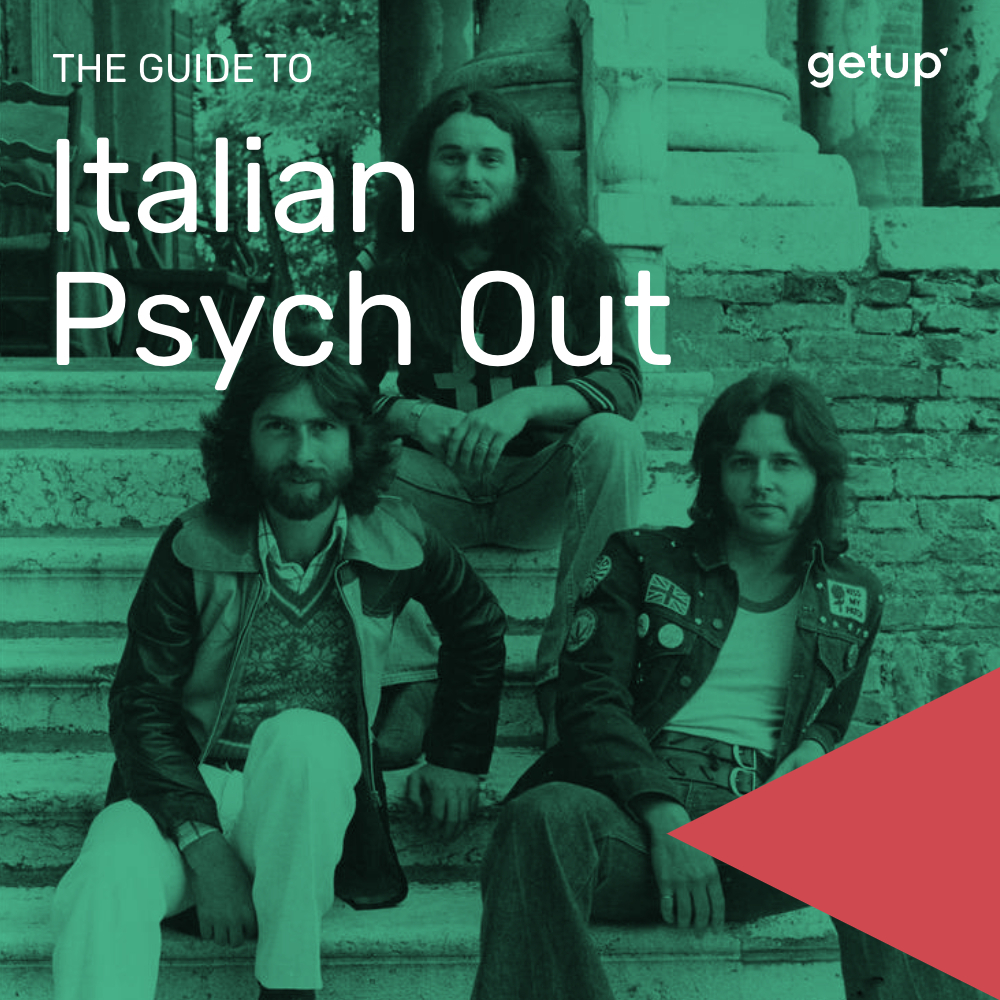Milano, 1968 – That’s not just the title of one of the tracks adorning Le Orme’s psychedelic masterpiece Ad Gloriam. In 1968, Milano was the culprit of the Italian underground. In an art deco – or Liberty style, as it was called in Italy – mansion in Via Bodoni, where the old, wealthy city lies forgotten outside the centre transformed by the economic boom, a commune is taking place. Italian psych-pop stars Equipe84 are the hosts, Georgie Fame, Allen Ginsberg, Gerard Malanga and Jimi Hendrix just some of the guests that would occasionally pop down.
The four-piece incarnated Italy’s own Kings Road psychedelic-dandies perfectly embodied by the band’s frontman, singer-songwriter Maurizio Vandelli. With its elegant skin and bone figure, long, wavy hair, flower-patterned shirts and embroidered jackets, Vandelli was the face of the transformation Italian beat was facing under the influence of drugs, flower power, student riots and the astonishing new music horizons opened up by The Beatles’ Sgt. Pepper’s Lonely Hearts Club Band. Following the example of The Beatles’ Apple Boutique, Equipe 84 opened their own clothing shop which, needless to say, like its London counterpart didn’t enjoy long life. Fab 4 were also the inspiration for the game-changing approach to production, following their revolutionary use of studio facilities during the Sgt. Pepper’s sessions. In 1967 Stereoequipe, one of the albums that best captures the psychedelic season of Italian pop, tracks flow one into the other, as if Equipe 84 were inviting the listeners to join into a trip in their commune. The villa’s multi-coloured stained-glass windows, its sophisticated art deco staircase and the blooming garden immersed the band into a psychedelic atmosphere outstandingly captured by “Nel ristorante di Alice”. The song, mutually inspired by Arlo Guthrie’s “Alice’s Restaurant” and by the countercultural meanings assigned by 1960s hippies to Alice in Wonderland, is a manifesto of 1967/68 Italian flower-pop. Feelings of joy and love permeated tracks like I Califfi’s “Così ti Amo” or le Orme’s “Mita Mita” – an ode to actress Mita Medici, one of the new faces of the Italian beat counterculture.
Mysticism and the cultural myth of the Maharishi figure spread in Italy too starting the use of sitars and exotic instruments, like in I Nomadi’s trippy instrumental “Baradukà”. Another instrumental, Equipe 84’s ‘Intermission Riff’ (not available on every streaming platforms), though, shows the darker side of psych. Drugs’ side effects took shape into acid, fuzzy riffs and unsettling vibes. Caterina Caselli challenged herself with a cover of “Paint It Black” (“Tutto Nero”), while New Trolls and Circus 2000 jammed along the themes of crystals (“Cristalli Fragili”) and black magic (“The Witch”). The 1970s heroin escalation within the hippy scene culminated into Daniela Davoli “Pelle Bucata”, an unsettling psychedelic funk-glam explicitly addressing the social issue of youth addiction to drugs.
These days, full of excitement for a changing society yet permeated by unsettling feelings of fear, became the playground for student riots and beatniks who dreamt of San Francisco and India but faced the harsh reality of the hobo and junkie life. In 1967 director Lino Del Frà captured the Italian psychedelic youth in his sociological-edged film Come Favolosi Fuochi D’Artificio, which highlights the counterculture’s contradictions through beautiful colour footage.
Even further went Roman pop artist Mario Schifano, who, just like Andy Warhol, set up a short-lived band (Le Stelle di Mario Schifano) as a multi-platform psychedelic art experiment. This shouldn’t come as a surprise considering that Rome Piper Club stage décor was a massive pop art installation by Claudio Cintoli. Le Stelle best captured, probably more than other bands, the spirit of the times of late 1960s Italy – a country of mind-blowing artistic experimentations where cinema, arts and music blended together under the impulse of psychedelia. This spirit was perfectly captured, nearly 20 years later, by No Strange – the only non-1960s band featured on the playlist with their trippy voyage “Riscopro I Colori”.
It was nonetheless this amalgamation of arts and music, of high and low, what made Italian psychedelia distinctively unique, although very short-lived before progressive took over and introduced the country to one of its most successful scenes. But that’s another story.





.jpg)
.jpg)

